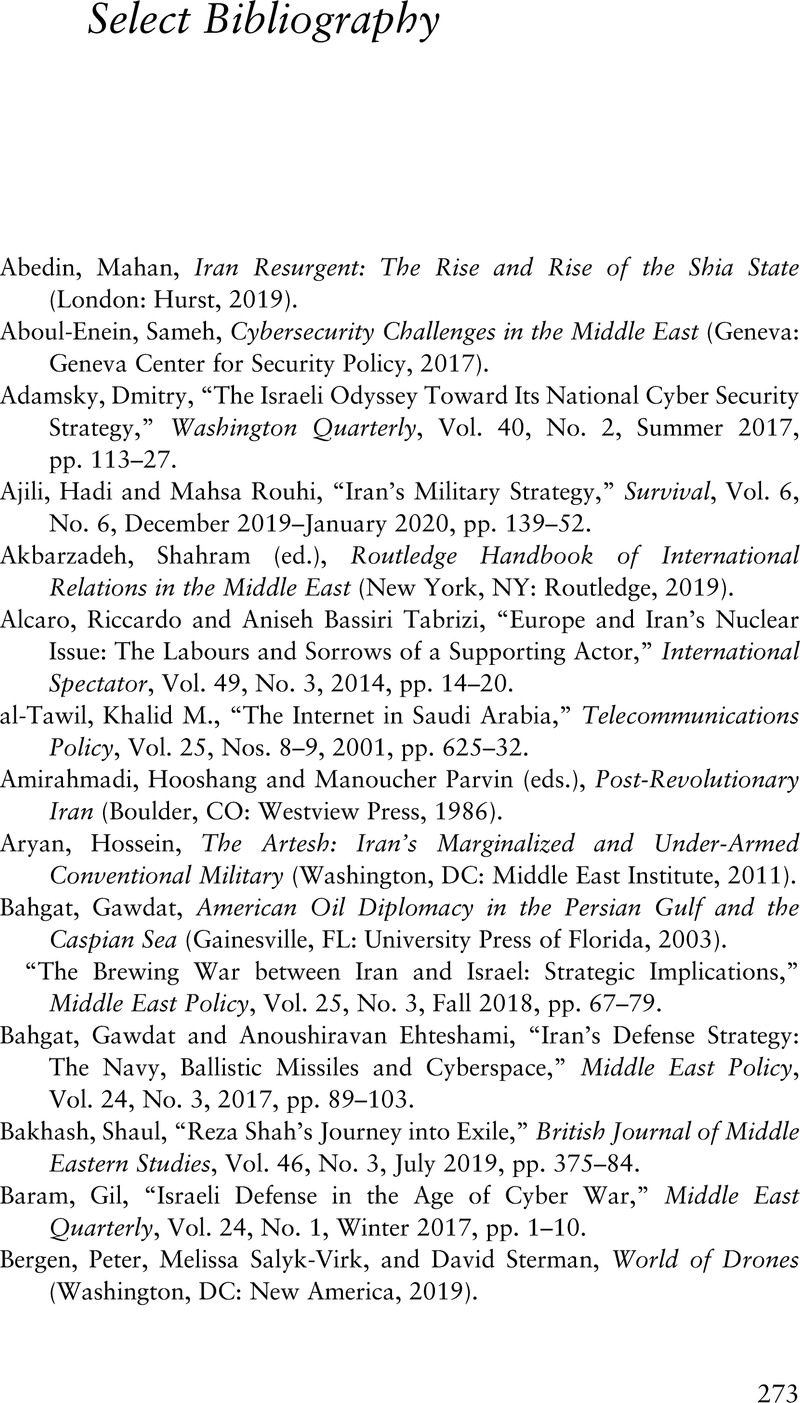Book contents
- Defending Iran
- Defending Iran
- Copyright page
- Contents
- Preface
- Abbreviations and Acronyms
- 1 Iran’s Defense and Security Doctrine
- 2 Iran’s Threat Perceptions
- 3 Defense Institutions
- 4 Iran’s Military–Industrial Complex
- 5 Structure and Makeup of Iran’s Armed Forces
- 6 Iran’s Ballistic Missiles and Space Program
- 7 Cybersecurity
- 8 Naval Forces
- 9 Iran’s Drone Capabilities
- 10 Proxies and Partners
- Conclusion
- Notes
- Select Bibliography
- Index
- References
Select Bibliography
Published online by Cambridge University Press: 05 October 2021
- Defending Iran
- Defending Iran
- Copyright page
- Contents
- Preface
- Abbreviations and Acronyms
- 1 Iran’s Defense and Security Doctrine
- 2 Iran’s Threat Perceptions
- 3 Defense Institutions
- 4 Iran’s Military–Industrial Complex
- 5 Structure and Makeup of Iran’s Armed Forces
- 6 Iran’s Ballistic Missiles and Space Program
- 7 Cybersecurity
- 8 Naval Forces
- 9 Iran’s Drone Capabilities
- 10 Proxies and Partners
- Conclusion
- Notes
- Select Bibliography
- Index
- References
Summary

- Type
- Chapter
- Information
- Defending IranFrom Revolutionary Guards to Ballistic Missiles, pp. 273 - 280Publisher: Cambridge University PressPrint publication year: 2021



